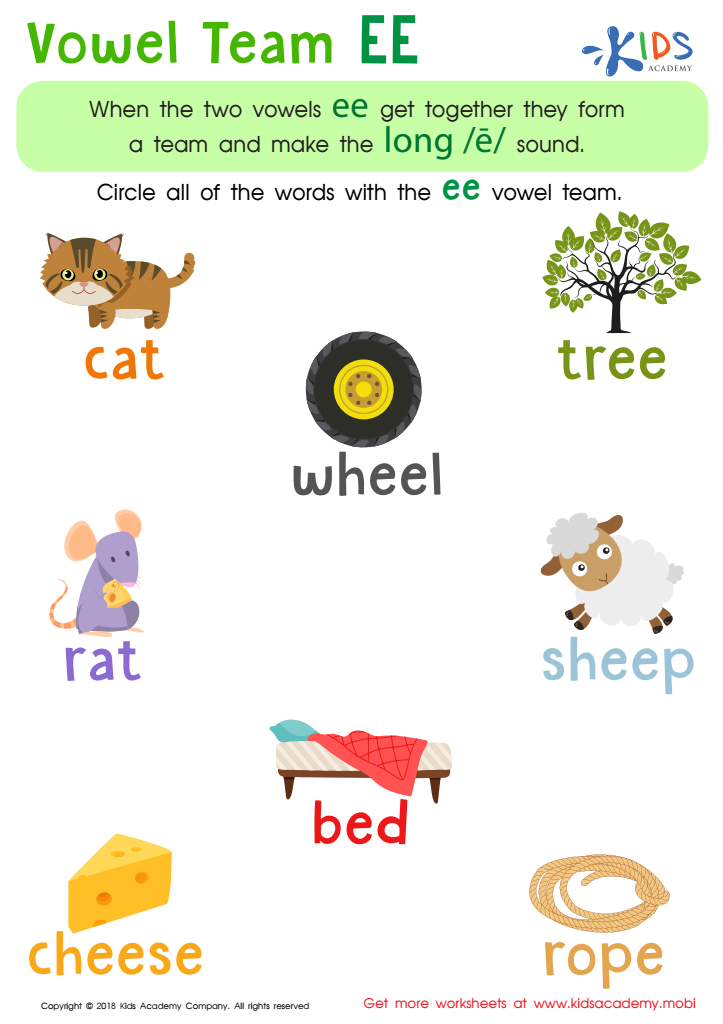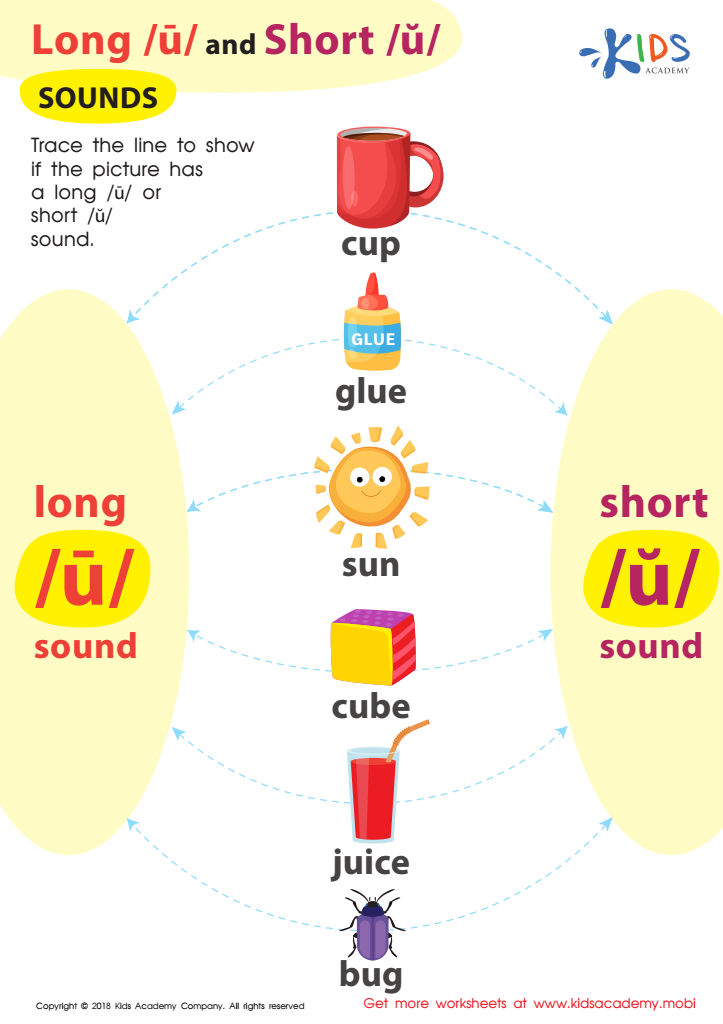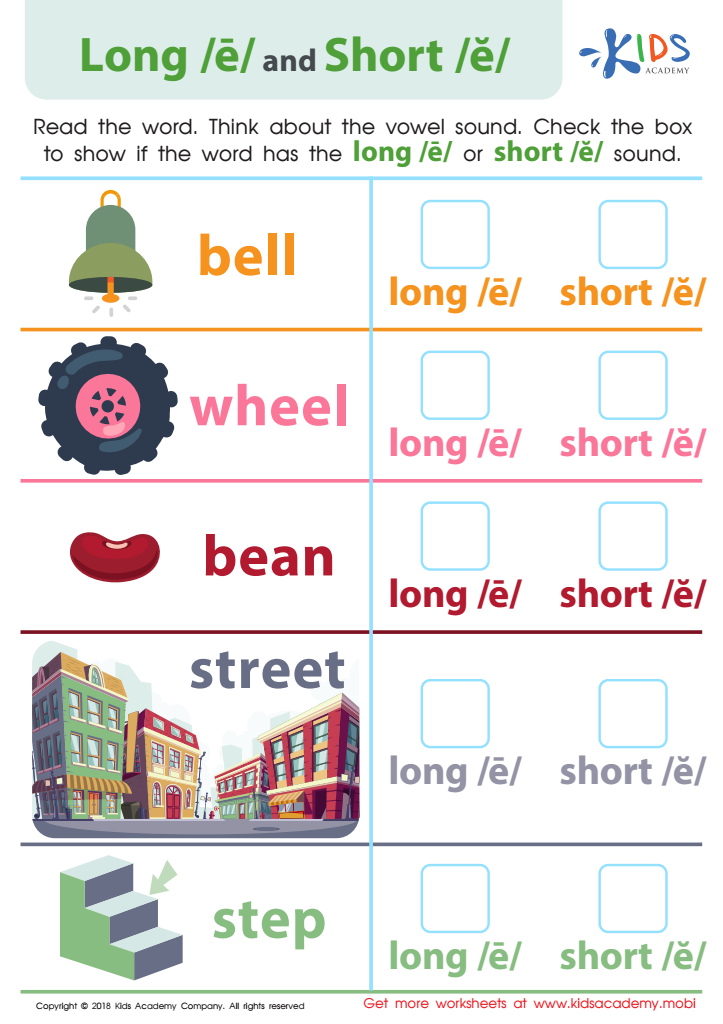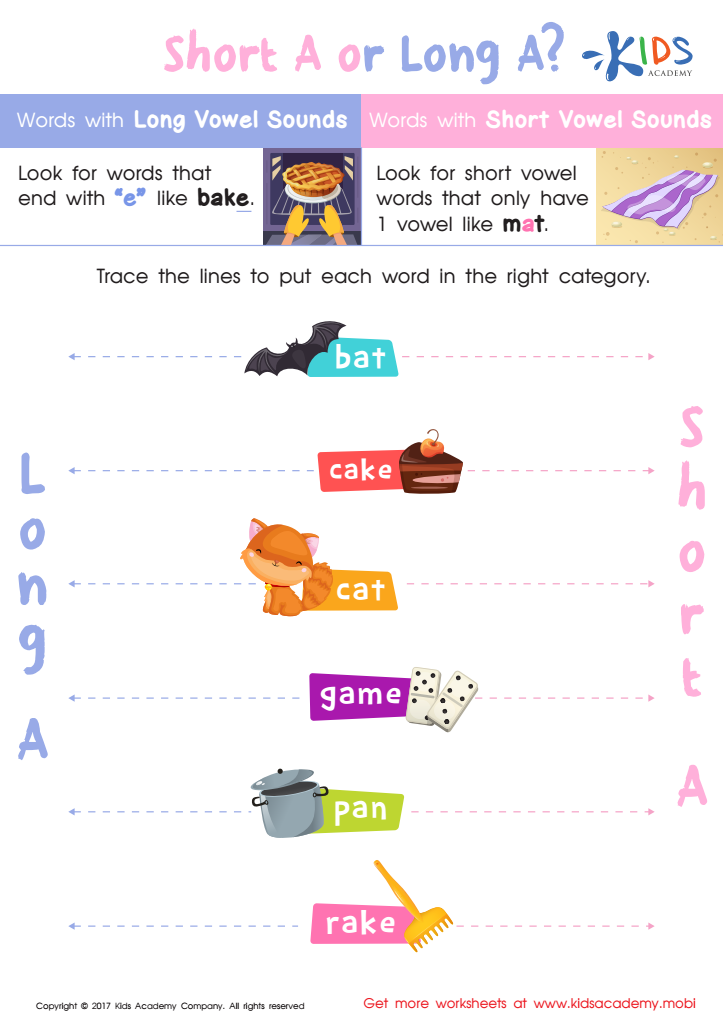Normal Long And Short Vowel Worksheets for Ages 3-8
18 filtered results
-
From - To
Enhance your child's reading skills with our Normal Long And Short Vowel Worksheets for ages 3-8. These vibrant and engaging worksheets are designed to make learning fun and effective for young learners. Help your child master the nuances of long and short vowel sounds, a crucial step in their phonics journey. Each worksheet features colorful illustrations and interactive activities that keep children motivated and excited to learn. Perfect for both classroom and home use, these worksheets provide a solid foundation in literacy, encouraging confident and capable readers. Discover the path to successful reading with our expertly crafted materials!


Reading: Y as Long I Worksheet


Reading: Vowel Team EE Worksheet


Reading: Long U and Short U Sounds Worksheet


Reading: Long O and Short O Sounds Worksheet


Reading: Long I and Short I Sound Maze Worksheet


Reading: Long E and Short E Worksheet


Reading: Long a and Short a Worksheet


Words with Long U Reading Worksheet


Phonics Long O Reading Worksheet


The Short I Words Reading Worksheet


Why Vowels? Reading Worksheet


short vowels Worksheet


Two Sounds for OO Worksheet


Long or Short Vowel Sound? Worksheet


Let's Check Long Vowels: Assessment Worksheet


Short /a/ or Long /a/? Worksheet


Long Vowel Maze /o/ and /i/ Worksheet


Silent E Words Worksheet
Understanding and distinguishing between normal long and short vowels is a foundational skill in early literacy crucial for children aged 3-8. During these formative years, children develop critical language and reading abilities that set the stage for their future academic success.
Phonemic Awareness: Knowing the difference between long and short vowels enhances phonemic awareness, a key component of early reading skills. Children learn to recognize sounds in words, which helps them decode (sound out) and spell new words.
Reading Fluency: Mastery of vowel sounds contributes to reading fluency. When children can effortlessly transition between vowels, they become more confident and efficient readers.
Comprehension: Proper vowel pronunciation impacts comprehension. Misreading a vowel sound can change a word’s meaning, leading to confusion. For instance, mixing up the short "i" in "bit" with the long "i" in "bite" can alter the context of a sentence entirely.
Spelling and Writing: Knowledge of vowel sounds aids in spelling. As children move from phonetic (sound-based) to conventional spelling, understanding vowel patterns becomes essential.
Confidence and Communication: Proficiency in vowels promotes clearer speech, contributing to a child’s self-esteem and ability to communicate effectively.
In conclusion, investing time in teaching and reinforcing long and short vowel sounds equips children with tools for reading, spelling, and communication, forming a solid foundation for lifelong learning.

 Assign to My Students
Assign to My Students

















